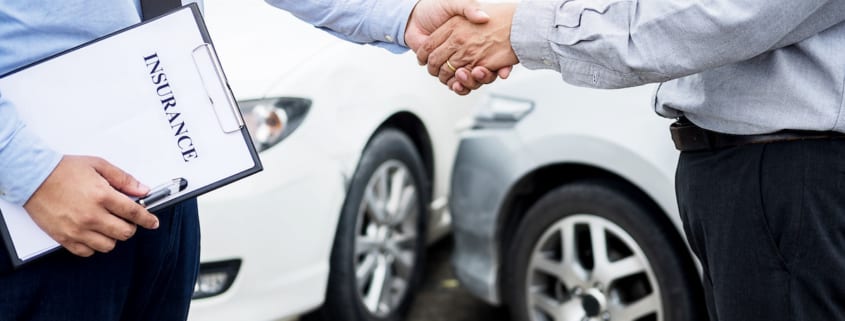Stacked Vs. Unstacked Auto Insurance – What You Should Know

Stacked Vs. Unstacked Auto Insurance
Think of a stack of boxes and a single box. Stacked boxes give you a taller stack while a single box is, well, one box. Keep these images in mind as we discuss stacked auto insurance versus unstacked insurance.
What’s the Difference?
Basically, stacked insurance covers bodily injury while unstacked coverage is for physical damage only.
Stacked Bodily Injury Car Insurance adds to your coverage when you have uninsured motorist (UM) and underinsured motorist coverage (UIM) and the other driver is an at-fault driver who is an uninsured motorist or underinsured motorist coverage. You can “stack”, or combine, the coverage limits for each car to create a higher amount of coverage. The stacking benefits only apply to bodily injury
Unstacked Physical Damage Car Insurance refers to your standard coverage limits for one particular vehicle, without combining the limits of several cars you own.
Details can vary depending on your state’s laws.
About UM and UIM
Bodily Injury – Stacked
Following an accident with an uninsured or underinsured driver, the resulting bodily injury portion of the policy helps pay for medical expenses. Stacking only applies to UM and UIM bodily injury coverage. Some states require bodily injury coverage, other states treat the coverage as optional.
Property Damage – Unstacked
UM and UIM property damage coverages are applied to the repair or replacement of your damaged property if a car accident’s at-fault driver is uninsured or underinsured. Property damage coverage cannot apply stacking to property damage limits.
How Stacking Works
States can differ in how stacking is handled. Some states allow stacking, others require it, and still other states don’t allow stacking. If you live in a state that allows stacking, your insurance policy may contain anti-stacking language.
If a state allows stacking, insurance generally may stack one of the following ways:
- An insurance policy insuring two or more vehicles
- Two or more policies can be stacked if they are in your name
There are policy coverage limits. When the same policy holder insures several vehicles, the insured can stack the limits set for each vehicle to provide much higher limits. This means that if you are in a costly accident with a UM or UIM driver, your policies for multiple car can expand the allowed limits to cover your incurred expenses.
When A Single Insurance Policy Covers Multiple Cars
As discussed earlier, stacked coverage enables you to combine limits, a real benefit if you get into an accident with an uninsured or underinsured at-fault driver. For instance, two vehicles covered on a single policy, each with a payout limit of $25,000. When stacked, coverage would increase your limits to be $50,000 per accident.
When Multiple Insurance Policies Cover Multiple Cars
Some states will let you stack UM and UIM coverage limits from multiple car insurance policies. Say one policy has an uninsured motorist bodily injury coverage limit of $25,000 and another has a coverage limit of $35,000. Stacking these two policies gives you a $60,000 coverage limit, which give you more financial strength should you get into an expensive accident with an uninsured or underinsured driver who is at-fault.
Stacked vs. Unstacked Policies
Stacking
Advantages of Stacking
Stacking lets you combine UM and UIM coverage limits on multiple vehicles if your name is on all of the policies. If you’re faced with expenses related to an accident, stacking can lower your out of pocket costs.
Recap:
- You’ll have more coverage in the event you are stuck with higher expenses following an UM or UIM accident
Disadvantages of Stacking
Higher coverage limits typically mean higher premiums. If you stack UM and UIM limits, your coverage could be more costly.
Recap:
- Stacking your uninsured or underinsured motorist usually results in having to pay higher premiums.
- Stacking is not available in every state
Unstacked
Advantages of Unstacked Policies
Your premiums will be lower than they would be with a stacked policy.
Recap:
- You’ll spend less for premiums
- If your policy includes a lot of coverage, may not need stacked insurance
- Fewer requirements to deal with
Disadvantages of Unstacked Policies
With unstacked policies you remain vulnerable.
Recap:
- If your policy limit is less than the actual costs for which you are responsible, you could end up paying hefty out of pocket expenses
Which States Allow Stacking?
Currently (as of May 2020) 32 states allow stacking, although your insurer may not offer it.
- Alabama
- Arkansas
- Colorado
- Delaware (across multiple policies only)
- Florida
- Georgia (across multiple policies only)
- Hawaii
- Indiana
- Kentucky
- Mississippi
- Missouri
- Montana
- Nevada
- New Hampshire
- New Jersey (across multiple policies only)
- New Mexico
- New York (across multiple policies only)
- North Carolina (across multiple policies only)
- Ohio
- Oklahoma (across multiple policies only)
- Oregon (across multiple policies only)
- Pennsylvania
- Rhode Island
- South Carolina
- Tennessee (across multiple policies only)
- Texas (across multiple policies only)
- Utah (across multiple policies only)
- Vermont
- Virginia
- West Virginia
- Wisconsin
- Wyoming
Alternative
PIP Coverage
In states that have no-fault laws, drivers must purchase personal injury protection (PIP), which may cover many of the same items as uninsured and underinsured insurance.
State no-fault laws require drivers to add PIP coverage to their auto insurance policy:
- Every driver involved in the event must file a claim with their own insurance company.
- Motorists are allowed to sue for severe injuries as well as for pain and suffering, with specific conditions related to severity of injury required.
- PIP covers:
- Medical expenses
- Lost income
- Funeral expenses
- Childcare expenses
- Survivors’ loss
- Household services
Closing Thoughts
Stacking your uninsured and underinsured motorist provides peace of mind and is a good option—if you can afford the higher premium costs and if stacking insurance is allowed in your state. Find the best car insurance rates and find the best coverage online.

 EINSURANCE
EINSURANCE EINSURANCE
EINSURANCE EINSURANCE
EINSURANCE